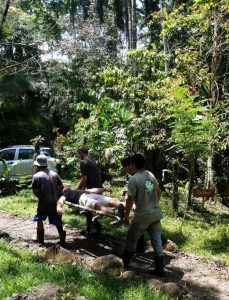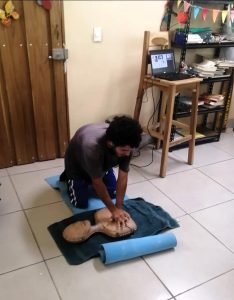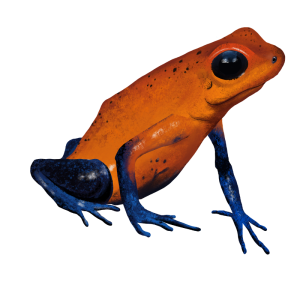Student’s father gives first aid training in the rainforest of Costa Rica
My youngest daughter Iris is studying Applied Biology in Den Bosch. I visited her at her internship site in Costa Rica, where she stayed for 5 months. I am writing a piece about this because in addition to visiting my daughter, I had the opportunity to provide first aid training for the foundation’s staff and guides. In addition, the visit also taught me something very important about conservation.
Update First Aid
My first reaction when I heard that Iris wanted to do an internship in Costa Rica was enthusiasm, my second concern. Of course it’s a tremendously fun opportunity to do an internship in such a beautiful country, with so much nature and such great biodiversity. But as a concerned fat
her, I had some reservations….
So I took action right away. I contacted the Work with Nature Foundation (the internship provider) and listened to how the stay was arranged, and how they ensure the safety and health of the students.
One of the topics that came up was first aid training for the staff and guides. Coincidentally, I provide first aid training in addition to my work, and visiting my daughter gave me the opportunity to do so for the foundation!
Design of the training
To tailor the training to the risks, I wanted to know how the students live and work at the project in Costa Rica. Key issues were: high temperature and humidity, lots of rain and mud in the rainy season, poor terrain due to vegetation and differences in elevation, day and night observations and hikes, poisonous plants, insects and reptiles.
Based on this, I set up a training based on Red Cross first aid and sports first aid courses and the MARCH Protocol, a treatment program from the U.S. Army aimed at treating trauma.

First aid kit
It was agreed with the foundation that I would train the leaders and guides. I felt it was important to get them ready to act right away. To do this, together with the startup “First 15,” I provided them all with an individual first aid kit containing a simple instruction card, a tourniquet, nitrile gloves, a trauma dressing, a CPR mask and a thermal blanket.
First 15 helps people act properly in the first 15 minutes after an accident. They sponsored the training by donating a good number of kits and additional demonstration equipment. Furthermore, I donated the bags for the first aid kits from my own BV, as well as the CPR doll for the training and additional materials to fill the bags.
The Training
The training went well despite having to be translated into Spanish. The participants practiced successfully with the donated materials.
A few things struck me:
- In a Spanish-speaking country, Staying Alive is not the best song to convey a rhythm of 110/120 BPM. For CPR/heart massage, that is the recommended rhythm! So a tip is to use a song that fits within a country’s music culture. Google “CPR song” and you will get plenty of alternatives from which to choose.
- My experiences with the First 15 tourniquet have been very good. The First 15 tourniquet, with elastic Velcro and simple buckle, was quite a bit easier than other alternatives. The instruction “pull as hard as you can until you no longer feel a pulse in your wrist or ankle” was sufficient.
- During the evacuation drill, the guides showed themselves to be “Masters of the Machete.” In a few minutes they made a stretcher with which they could safely transport a victim.
All in all, a fun day with positive results and reactions of the participants to the training!
“Buy a piece of rainforest!”
I had two reasons for writing this piece: the training and the new insights I gained about conservation through small-scale actions.
I used to see advertisements to buy a piece of rainforest and support conservation. I always thought, “Yeah , right”, “What difference is that going to make!”.
I can now say that I have seen with my own eyes that it works: The Adopt Rainforest Foundation has purchased so much rainforest in recent years that they have created a green corridor between the important Barbilla National Park and the beautiful Cabecar Indian Reservation. As a result, an uninterrupted strip of nature now exists for nature to use. This was the puzzle piece that nature needed to cross Costa Rica. Perhaps a relatively small initiative but with great impact.
Meanwhile, Iris has successfully completed her internship, I have experienced what real nature looks like, and the foundation’s staff goes out with a well-stocked first aid kit and the right knowledge. And I bought a piece of rainforest because I have seen that it works!
Robert Klingens, father of HAS Den Bosch student Iris.

